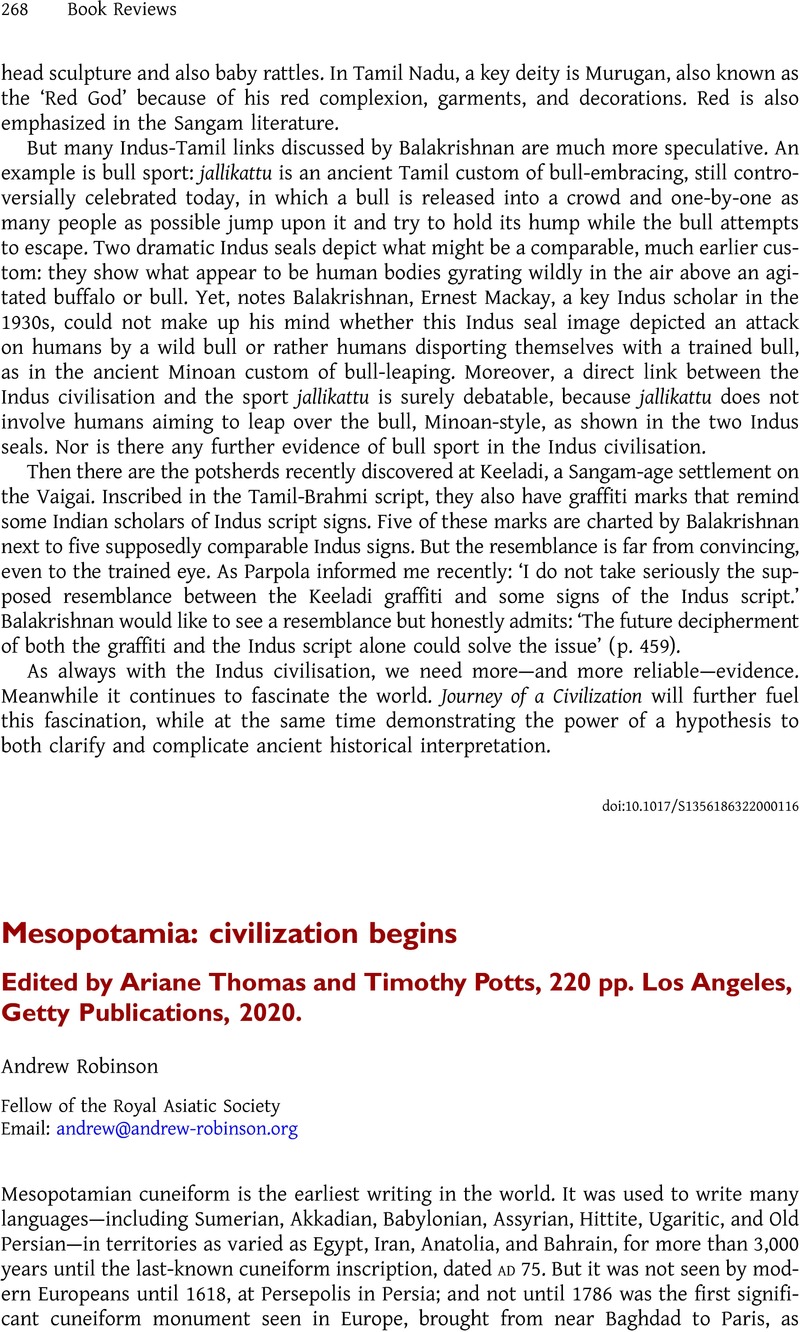No CrossRef data available.
Published online by Cambridge University Press: 06 April 2022

1 Bottéro, Jean, ‘Au commencement, les Sumériens (propos recueillis par Jean-Maurice de Montremy)’, Les Collections de l’Histoire 22 (2004), p. 10Google Scholar.